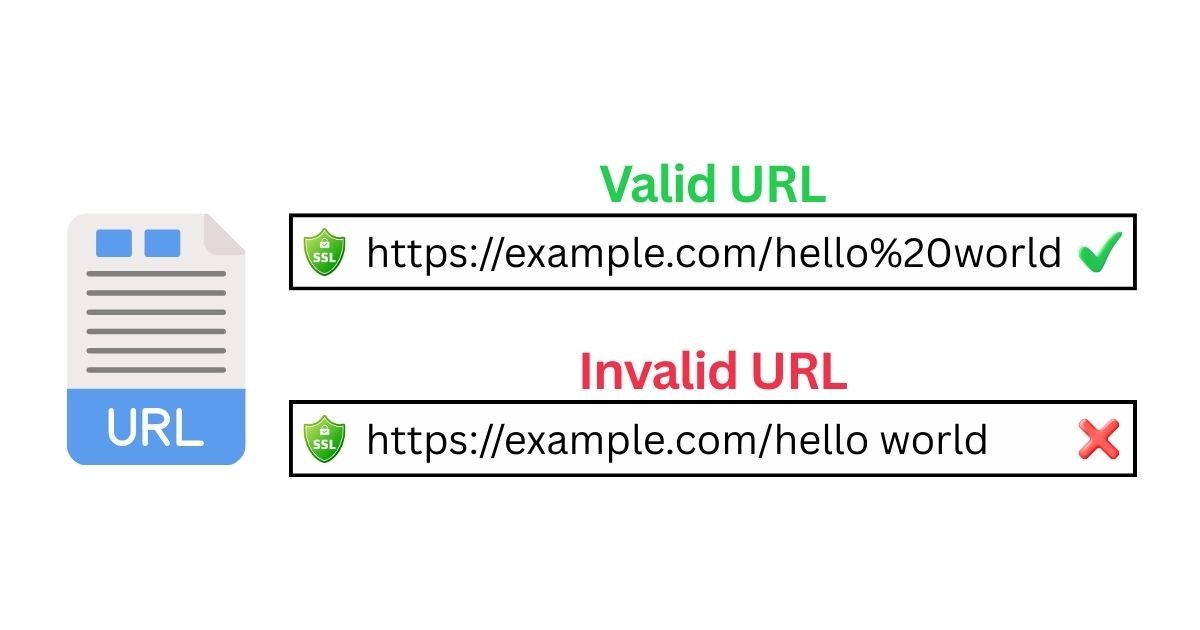URL Encoding Explained: Spaces, Special Characters & Real Examples
Learn when to encode characters in a URL, the difference between path and query encoding, and the safest functions to use in JavaScript, Python, and PHP. Try it live with our URL Encoder / Decoder.

What is URL encoding?
URL encoding (percent-encoding) converts unsafe characters to a % followed by two hex digits (e.g., space → %20). This keeps URLs valid and unambiguous when they contain spaces, Unicode, or reserved characters.
Encoding applies to different URL parts (path, query, fragment). Each part has slightly different rules, which is why we use different functions in code.
Reserved vs unreserved characters
- Unreserved (usually don’t encode):
A–Z a–z 0–9 - _ . ~ - Reserved (special meaning, encode if literal):
! * ' ( ) ; : @ & = + $ , / ? # [ ]
Example: In a query string, & separates parameters, so a literal ampersand inside a value must be encoded as %26.
Spaces: %20 vs +
In the query part, spaces are often encoded as + (form-style) or %20. In the path, always use %20. When in doubt, %20 is universally safe.
Path vs query encoding (why two functions?)
- Path segments (e.g.,
/files/my report.pdf): encode everything unsafe; don’t turn spaces into+. - Query strings (e.g.,
?q=my report&lang=en): encode values and names;+is acceptable for spaces.
This is why languages provide different helpers like encodeURI vs encodeURIComponent or rawurlencode vs urlencode.
Code examples (JavaScript, Python, PHP)
JavaScript
// Good defaults:
// - encodeURIComponent: for query parameter names/values
// - encodeURI: for full URLs (keeps : / ? # & =)
const base = "https://example.com/search";
const params = new URLSearchParams({
q: "URL encoding & spaces",
lang: "en-US"
});
const full = base + "?" + params.toString();
console.log(full);
// https://example.com/search?q=URL+encoding+%26+spaces&lang=en-US
// Encoding a PATH segment
const filename = "my report (final).pdf";
const url2 = "https://example.com/files/" + encodeURIComponent(filename);
console.log(url2);
// https://example.com/files/my%20report%20(final).pdf
Python
from urllib.parse import urlencode, quote, quote_plus
# Query params
params = {"q": "URL encoding & spaces", "lang": "en-US"}
qs = urlencode(params) # uses quote_plus (spaces -> +)
print("https://example.com/search?" + qs)
# Path segment
filename = "my report (final).pdf"
print("https://example.com/files/" + quote(filename)) # %20 for space
print("https://example.com/files/" + quote_plus(filename)) # + for space (avoid in path)
PHP
<?php
// Query params (spaces -> +)
$params = http_build_query(["q" => "URL encoding & spaces", "lang" => "en-US"]);
echo "https://example.com/search?$params\n";
// Path segment
$filename = "my report (final).pdf";
echo "https://example.com/files/" . rawurlencode($filename) . "\n"; // %20
// Avoid urlencode() for paths because it turns spaces into +
?>
Common mistakes (and how to fix them)
- Double-encoding: Don’t run
%20through an encoder again (it becomes%2520). Decode once before re-encoding. - Encoding the whole URL with the wrong function: In JS, use
encodeURIfor the full URL,encodeURIComponentfor parts. - Using
+in paths: Browsers don’t treat+as a space in path segments—use%20. - Not encoding non-ASCII characters: Always encode Unicode characters in paths and query values for compatibility.
- Breaking analytics: Unencoded
&inside values can split parameters. Encode it as%26.
SEO & analytics tips
- Human-friendly slugs: use lowercase, hyphens, and encode spaces as
%20if they must appear (better: avoid spaces altogether). - Stable URLs: don’t change encoding schemes later (e.g., switching
+to%20) without redirects. - Consistent tracking: always encode query values the same way to avoid duplicate dimensions in analytics.
Test quickly with our URL Encoder / Decoder and verify titles/descriptions with the Meta Tag Analyzer.
Previous
UNIX Timestamp Converter: Time Zones, Milliseconds & Pitfalls
Next
Regex for Everyday Tasks: 12 Copy-Paste Patterns